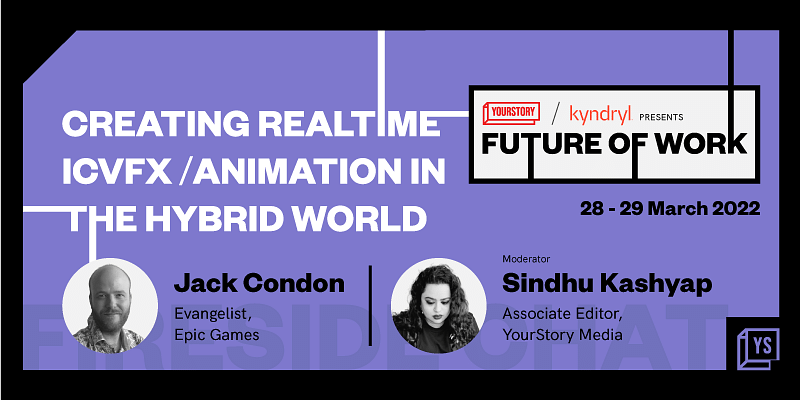Whether it is giant monsters crushing the Hong Kong skyline in Godzilla vs Kong or Neo defying physics while dodging bullets on screen in The Matrix, the jaw-dropping visual effects on the screen have had viewers pause and ask themselves—“How did they do that?” The most likely answer to come up with the same question is — Unreal engine by Epic games!
More than a decade ago, North Carolina-based Epic Games launched a commercially available video game engine, Unreal, and transformed the quest to prove what is possible on a screen.
Besides powering their own superhit internally developed video games, such as Fortnite and the Unreal, Gears of War and Infinity Blade series, the multi-platform engine is the most popular choice of developers to build their creations and has evolved to become the ubiquitous bedrock upon which Xbox 360, PlayStation 3, PC and even iPhone and iPad blockbusters are built.
The technology behind the Unreal Engine is regarded as “one of the most widely used” engines in existence.
Epic Games has been pushing the capabilities of its software beyond the world of gaming, as this infrastructure offering starts to become a core business of its own. This includes use of the engine to create a sort of real-world holodeck by NASA, Walt Disney creating a Star Wars-themed experience for its theme parks or a high-end British car manufacturer McLaren Automotive showing off how vehicle design and even sales with the help of the same engine.
From architecture to medical research and car manufacturing, the infrastructure offered by Epic Games is becoming critical across many sectors, besides games, and is likely to unlock a whole new world of collaborations and working amongst various stakeholders.
“Unreal Engine has been around for a very long time and its history is very much in video games. But with the rise of the GPU and extra compute power, the complexity of digital graphics has expanded to the point where we’re able to use these game authoring tools for a lot more applications. Ultimately, Unreal is a software tool that enables you to place assets, that can be anything from a car to a film set to a strange alien creature, into a virtual world and essentially render that in multiple platforms,” says Jack Condon, Evangelist for Epic Games, during a conversation with YourStory at Future of Work Summit 2022.
Unreal Engine has transitioned from a distribution platform to a collaboration tool. A great example of this multi-user editor, that allows multiple creatives to dive in at once, work together on a single project, and “have conversations”.
“This could mean that you could have a film director jump into VR, and look at a virtual film set, which is a digital twin of a real set, and direct them or make changes. This is a new way of working. So it’s far more than just an application on a phone, but a whole new way of working with all, within the Unreal Engine,” he adds.
Beyond gaming
The Unreal Engine has become increasingly important for Hollywood projects using real-time rendering. In particular, Disney and Lucasfilm have turned to Epic’s engine as a tool for filmmaking, using it to create virtual sets, characters, and animations for large Star Wars projects, including Solo, Rogue One, and The Mandalorian.
The Engine is also used by automakers like Audi, Porsche, and Volkswagen to help design cars using visualisation and other software processes. Architectural firms use the engine for similar reasons, allowing those companies to perform real-time visualisations of in-progress projects.
Epic also licences Unreal for broadcasting and live event production, with the engine capable of producing real-time graphics, overlays, and other real-time rendered assets.
“Through the augmentation of AR, we’re able to film a car (digital double) that doesn’t even exist yet, and have the marketing material ready to go at the car’s launch. That’s really empowering those teams to create content,” says Jack.
The idea of showcasing a car via a commercial without having an actual car in the frame or in reality, takes Jack back to the idea of “instant feedback” and being able to change things on the fly to bring in personalisation for the users. This could be anything, starting from interiors to visual background.
“That’s the freedom that real time rendering gives you. It gives you the ability to change things and see if you like them, and more importantly, start a conversation and insert personalisation through VR. Different verticals are taking different advantages from this,” says Jack.
New innovations and tools: Bringing everyone together
The idea of bringing visual effects to the engine world was initiated with the launch of compositing tool, Composure.
Compositing is the act of combining visual elements from different sources into a single image. In the visual effects industry, compositing a single frame is usually an offline process and can take some time. With compositing built into the engine, users can easily visualise green-screened scenes combined with CG in real-time.
The most exciting part about Composure is collaboration, says Jack, as he takes us through the production world. One of the biggest and earliest adopters of this was —The Matrix.
“We started to see all these incredible films pushing the potential of stuff we’d never seen before. Green screen revolution was huge for films. Conversations started to take place inside a camera between the movie director, actors, director of photography, other crew members who can add their skill set in the production, and decisions can be made on the fly. This is a whole new era of these types of conversations that usually happened in silos on a movie set or post production,” says Jack.
The future is collaborative and unreal
From video games, to film to now the auto and medical sector, what stands in the middle is the core technology offered by Unreal Engine, giving rise to the idea of “skill sharing”.
“All these fields are united by a single tool (Unreal). The immediate benefit of this is skill sharing where video games learn from films, auto learns from video games and so on, including interactivity, designs, storytelling, 3D environments, user experiences and understanding and so on. With a common route of Unreal, skill sharing is really shaking up a lot of industries and ultimately this is what is causing the most disruption and benefits across these industries as well,” he says.
On AR and VR, and other tools that the creators are equipped with today, we have only scratched the surface, says Jack.
“Every new medium unlocks unknown potential in terms of its ability to change and shape the world. And we’re only seeing the very beginning of AR and VR or move towards the concept of Metaverse. The proof is in the pudding. If real time technologies are augmenting existing pipelines, making them more efficient, collaborative, fun, then tomorrow they might be making new pipelines of things that we haven’t even thought about yet. And that’s really exciting,” he adds.
The future, from Epic’s perspective, is Unreal!










